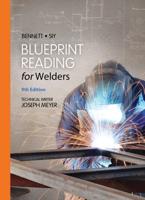Publisher's Synopsis
Excerpt from An Evaluation of Dial Thermometers for Measuring Soil Temperature
The thermistor used is designated by the manufacturer as model No. 7a disc type thermistor and is the same unit used in the Colman fiber glass soil-moisture element. It is a pellet of metal oxide, silver coated on its opposing sides, inches in diameter and inches thick. The manufacturer's rated resistance is ohms, plus or minus 10 percent at 25 degrees centigrade° The resistance of the pellet is sensitive to changes in temperature. Consequently, it can be used to determine-temperature.
Each of the two types of thermometers was installed, in duplicate, at h and 8 inch depths in Cecil clay loam soil, covered with a Bermuda grass sod. They were installed in a rectangular block such that there were four of one type in line, spaced about one foot apart, with the first and third thermometer being at the h-inch depth and the second and fourthat the 8 inch depth. This pattern was repeated for the second type with the line of thermometers placed about one foot from the first type and parallel to them. This installation resulted in the two types and depths being equidistant from each other.
The dial type thermometers were installed by forcing the stem into the ground to the desired depth. Soil temperatures were read directly in degrees Fahrenheit from the dial scale without disturb ing the thermometers. A point 1 inch from the bottom of the stem was taken as the reference for depth. The 8 inch thermometer was therefore sunken into the surface by'l inch.
About the Publisher
Forgotten Books publishes hundreds of thousands of rare and classic books. Find more at www.forgottenbooks.com
This book is a reproduction of an important historical work. Forgotten Books uses state-of-the-art technology to digitally reconstruct the work, preserving the original format whilst repairing imperfections present in the aged copy. In rare cases, an imperfection in the original, such as a blemish or missing page, may be replicated in our edition. We do, however, repair the vast majority of imperfections successfully; any imperfections that remain are intentionally left to preserve the state of such historical works.










